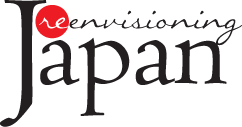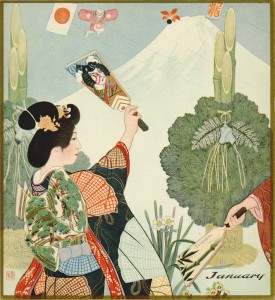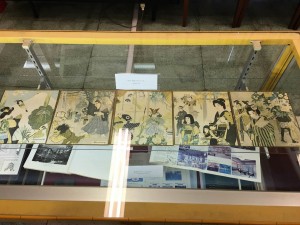“Tourist Japan” is a course that I began teaching in the fall of 2002 in relation to this project. The basic syllabus for the current (Spring 2016 semester) iteration of the course is now available under “About.”
“Tourist Japan” has been a venue for working through my ideas while building and studying the physical collection. The course evolved as I began to think more critically about digital humanities practice and material culture; I significantly redesigned the syllabus for the Spring 2015 semester. I taught the course as a digital humanities lab for the first time in Spring 2014, adding hands-on class sessions on developing metadata (logistics as well as the philosophical issue that inevitably arise in their creation) and digital curation. Students use Omeka as a platform to create their own exhibits using objects from the Re-Envisioning Japan collection, at both the midpoint of the semester (divided into small groups as an introduction to the collaborative dimension of DH practice) and at the end, when they work on individual projects. As Michael Roy points out (“Either/Or? Both/And” Difficult Distinction within the Digital Humanities,” Educause Review, May-June 2014, 16-20), in digital humanities, distinctions between teaching and research are often blurred. Roy explains how students can “become co-investigators on humanities-focused questions, doing meaningful work on large, complicated research projects.” There is a productive, reciprocal relationship between my digital scholarship and my teaching. Integrating the Re-Envisioning Japan digital archive into the classroom experience has been a natural extension of the act of researching these objects and the life and times of the people who made and used them. I gain fresh perspectives from student insight and students have access to unconventional but deeply resonant and informative primary source material. The archive and the collection become important tools that complement secondary reading assignments and films that are both screened in class and designated as part of their weekly assignments. This hybrid model of teaching opens up opportunities for new directions in the critical analysis of these objects and the world they reflect.



